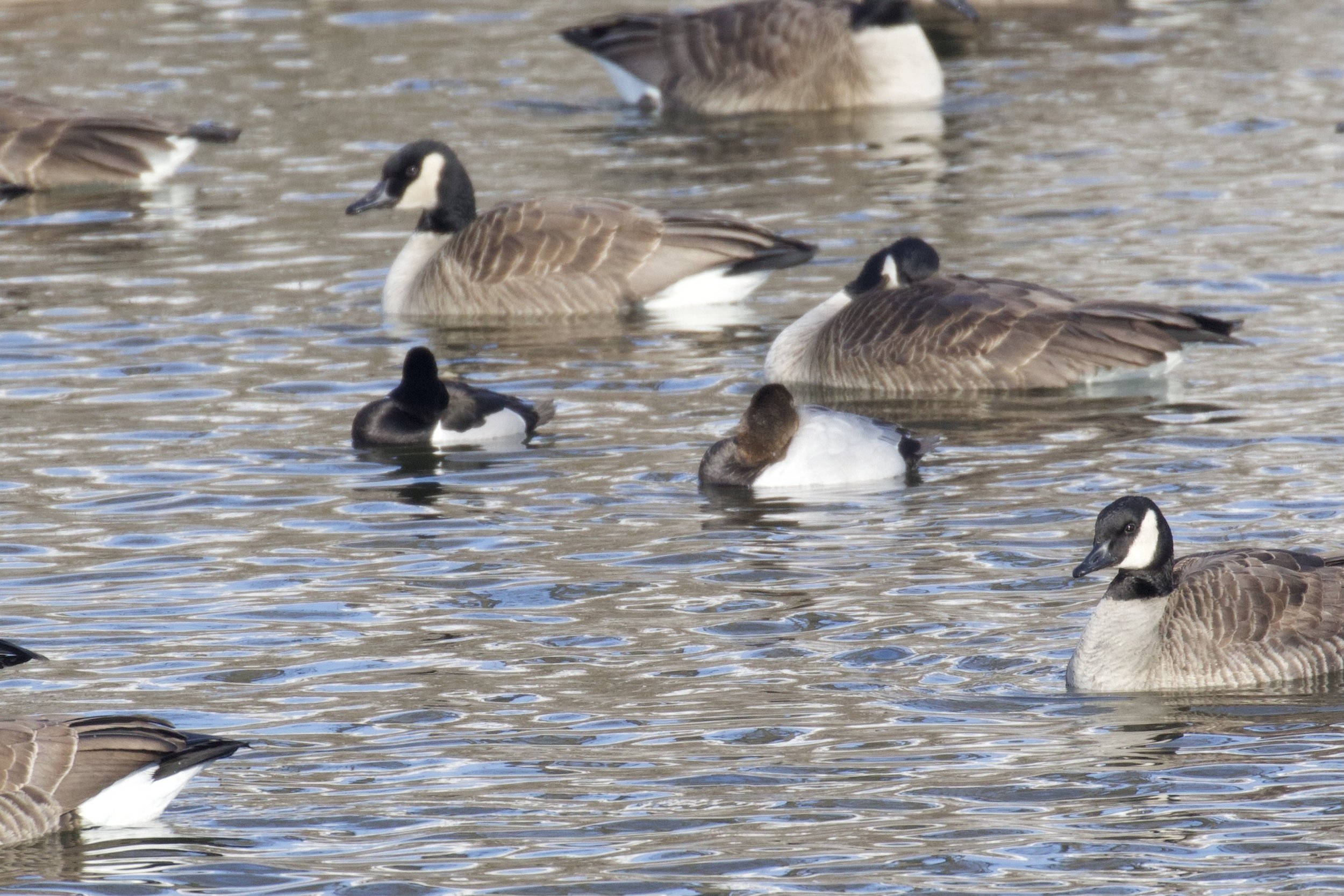Location of the Month: Kaufman Park
A male Ring-necked Duck and a female Canvasback sleeping among a flock of geese at Kaufman Park in February 2021. Photo by Colin Dobson. This is an example of what part of an open water hole may look like in the winter, some diving ducks mixed in with Canada Geese. Something you do not see every day!
By Colin Dobson, CCAS President
Kaufman Park is located on the west side of Champaign just north of Springfield Avenue. The main component of this park is Kaufman Lake, which is a long, narrow lake that has a trail along the whole edge. This park can be worth a stop anytime, but late summer and winter are the two best periods of the year to visit this park to see plenty of birds! There are two primary parking areas, the large one on the east side by the small lakehouse, and on the west side. This parking lot is accessed by the short road that continues west along the south side of the lake from the east parking lot.
The reason I chose to feature Kaufman Park in December is that when most of the other lakes freeze in the Champaign-Urbana area, most of the geese and ducks move to Kaufman Lake. Although December may be a tad too early, this is a great time to start checking the lake from time to time. January and February are the two best months to see birds on the lake here, but it can freeze when temperatures become very cold. A hole of open water usually forms in the center of the lake because of large numbers of waterfowl that move over to the lake, but as temperatures become colder, this hole can freeze and force birds to go elsewhere.
In years past, Long-eared Owls have also been found in the spruce trees in the southwest section of the park during this same period. If you happen to find one, please give the owl space. Owls can become very stressed when approached by humans so it is best to give an owl plenty of distance. One of the best ways to look for an owl is to look for pellets and 'white wash' (or poop) on the ground or branches of a tree. Because an owl typically uses the same tree to roost during the day, over time a bird regurgitates more pellets, therefore making it more obvious that a bird might be there. If you happen to see evidence of an owl, look up. One (or more than one) may be above you!
In late summer, this is a great location to see either night heron species, Black-crowned and Yellow-crowned. Black-crowned is the expected species, but one or two juvenile Yellow-crowned Night-Herons have been found over the last few years as well. These herons can be seen throughout the lake, but especially along the western shoreline sitting on exposed logs near the shoreline, viewed from the east parking lot. Lastly, because the lake is surrounded by plenty of trees (and a diversity of tree species as well) this can also be a great spot to look for migrants as well as some sparrows during the winter! A short walk on the trail along the perimeter of the lake can be perfect to see some of these as well as any of the other birds as well!

